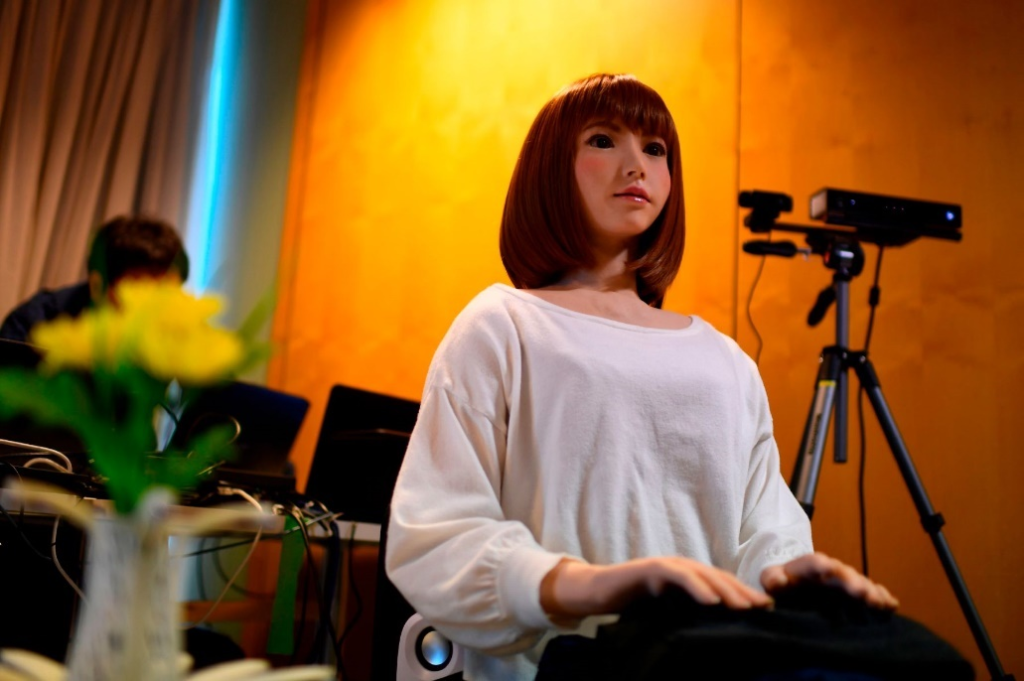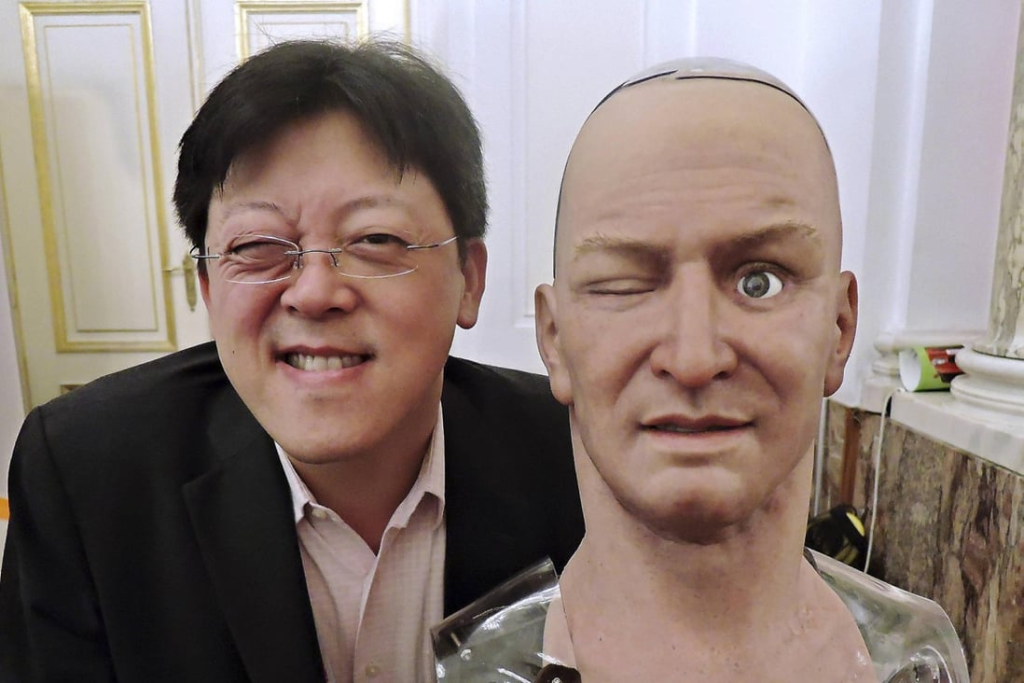Welcome to our blog where we explore the fascinating world of robotics and artificial intelligence. We’re going to talk about a fascinating subject: robots that look like humans. It is now possible to build robots that imitate human behaviour and appearance. In addition to performing difficult jobs because of improvements in robotics technology.

In this article, we’re going to look into the topic of humanoid robots and examine their many uses, difficulties, and potential. Therefore, read on to learn about the amazing world of robots that resemble people. This is whether you’re a tech fanatic or just curious about robotics’ future.
Table of Contents
Robots That Look Like Humans
1. Sophia

Sophia is a humanoid robot created by Hanson Robotics in Hong Kong. She was activated on April 19, 2015, and has since become one of the most famous robots in the world. Sophia has been featured on various news and talk shows. She has even been granted citizenship by Saudi Arabia, making her the first robot to receive citizenship.
Sophia is designed to mimic human expressions and gestures, and she uses artificial intelligence to recognize and respond to human speech. She can hold conversations, answer questions, and express emotions, making her seem more human-like than many other robots.
Sophia has been used to promote various causes, such as women’s rights and the use of AI for social good. Her creators hope she will inspire people to think about robotics’ future and how it can benefit humanity.
Sophia is certainly an impressive technological achievement, but there are also questions about ethics and implications. Some worry that lifelike robots could replace humans or even threaten society if they’re too advanced.
Sophia is still a fascinating example of modern robotic capabilities, and she’ll probably inspire and capture people for years to come.
2. Erica

Erica is a humanoid robot developed by Japanese roboticist Hiroshi Ishiguro and his team at Osaka University Intelligent Robotics Laboratory. Erica is designed to have natural conversations with humans, so she can provide elderly care.
Erica has a lifelike appearance, with silicone skin and a head of real hair. With her advanced AI system, she can understand and respond to natural language, making her conversations with humans feel more natural.
She communicates emotion and empathy through her facial expressions and gestures, which is one of her unique characteristics. Her creators hope that will make her a great companion for elderly people who don’t have a lot of human contacts.
Erica has been used in various research studies. Her creators hope to develop her further to the point where she can be used in practical applications. For example, assisting caregivers or providing companionship for the elderly.
Erica’s impressive technology raises ethical concerns about the possibility of replacing humans with lifelike robots. It will be important for researchers and developers to consider these concerns as they continue to work on advancing humanoid robotics.
3. Jia Jia

Jia Jia is a humanoid robot created by researchers at the University of Science and Technology of China in 2016. She is designed to look like a young woman, with a realistic appearance that includes movable eyebrows, lips, and eyes.
Jia Jia is programmed to hold simple conversations with humans and can recognize speech and respond to questions. She can also display a range of emotions, such as happiness, sadness, and surprise, through her facial expressions and body movements.
One of the unique features of Jia Jia is her ability to make eye contact with people and track their movements. This makes her interactions with humans feel more natural and engaging.
4. Nadine

Nadine is a humanoid robot created by a team of researchers at the Nanyang Technological University in Singapore. Designed to look and act like a human, she can hold natural conversations and looks lifelike.
One of her unique features of Nadine is her ability to remember people and previous conversations with them. This allows her to develop a sense of Know-how and rapport with people, making her interactions more natural and personal.
Nadine is also capable of recognizing and responding to emotions, allowing her to display empathy and understanding during conversations. This makes her potentially useful in settings such as therapy or counseling.
In addition to her conversational abilities, Nadine also has practical applications in fields such as healthcare and education. She can be used as a receptionist, customer service representative, or a teaching tool.
While Nadine is still a prototype and not yet commercially available, her development represents a significant achievement in humanoid robotics. As researchers continue to improve her technology, humanoid robots like Nadine may one day become common sights in many different settings.
5. Geminoid HI-2

Hiroshi Ishiguro and his team at Osaka University Intelligent Robotics Laboratory created the Geminoid HI-2 humanoid robot. The HI-2 looks and acts like a human, including mimicking human expressions and movements.
By using a Video capture system, HI-2 can be controlled remotely by a human operator. Since HI-2 can be controlled in real-time, it is an ideal tool for studying human-robot interactions.
HI-2 has been used in various research studies, including investigations into how humans perceive and interact with lifelike robots. The creators of HI-2 hope to gain insight into how humans interact with robots by studying how we interact with them.
Humanoid robot HI-2 represents a significant step forward in the field of humanoid robotics despite being primarily a research tool. In the future, researchers may see robots like HI-2 used in healthcare, entertainment, and other settings.
6. Telenoid R1
Japanese roboticist Hiroshi Ishiguro and his team at Osaka University Intelligent Robotics Laboratory developed Telenoid R1. Unlike other humanoid robots, Telenoid R1 has a Streamlined appearance, with a small, featureless body and an egg-shaped head.
Telenoid R1 is designed to be used in telepresence applications, allowing a person to remotely communicate with others through the robot. Telenoid R1’s simplicity allows it to be easily manipulated by a remote operator. This operator can control the robot’s movements and expressions in real-time.
A unique feature of Telenoid R1 is its ability to convey a sense of physical presence despite its minimalist design. This is achieved through a combination of robot movements and haptic feedback. This allows the remote operator to feel the robot’s movements and touch.
The Telenoid R1 has been used in a variety of research studies and practical applications, including remote communication in healthcare. Through robots like Telenoid R1, its creators hope to reduce loneliness among the physically disabled.
In humanoid robotics, Telenoid R1 is an exceptional and valuable tool due to its simplicity and effectiveness in telepresence applications. One day, robots like Telenoid R1 might become a familiar sight in many different settings, from healthcare to business.
7. Actroid

Kokoro Company Ltd. and Osaka University’s Intelligent Robotics Laboratory developed Actroid, a series of humanoid robots. The Actroid robots look and act like humans, with lifelike appearances and the ability to mimic human expressions and movements.
Actroid has been used in a variety of settings, including as receptionists, performers, and even in medical simulations. Their realistic appearance and behavior make them ideal for tasks that require human presence but without human limitations and variability.
One of the unique features of Actroids is their ability to mimic human facial expressions and movements with incredible accuracy. They use a combination of advanced robotics and animatronics technology to create lifelike movements, including blinking, smiling, and even speaking.
Actroids have been used as performers in theme parks and museums, as well as receptionists in hotels and businesses. Their creators envision them being used in many different fields, including healthcare, education, and entertainment.
Actroids, although still relatively new and not widely available, represent a major advance in humanoid robotics. From healthcare to entertainment, humanoid robots like Actroids could one day be commonplace as researchers refine and improve their technology.
8. Han

Hanson Robotics, a Hong Kong-based company that creates lifelike robots that can converse with humans, created Han, a humanoid robot. His looks and actions are designed to be as human as possible, with a range of human-like expressions and emotions.
One of Han’s unique features is his ability to recognize and respond to human emotions. This allows him to engage in more natural and intuitive conversations with people. He also understands and processes natural language, allowing him to respond to a wide range of questions and statements.
Han has been used for customer service and for teaching and training. His creators envision him being used in many different fields, including healthcare, education, and entertainment.
One of Han’s most notable attributes is his ability to engage in creative activities, such as painting and composing music. He has even collaborated with human artists to create works of art that combine the skills of both humans and robots.
9. Zeno R25
Zeno R25 is a small humanoid robot developed by Hanson Robotics. It is a Hong Kong-based company that specializes in creating lifelike robots that hold natural conversations with humans. Zeno R25 is designed to look and act like a child. He has a playful and curious personality that makes him more relatable to children and easier to interact with.
One of the unique features of Zeno R25 is his ability to recognize and respond to human emotions. This allows him to engage in more natural and intuitive conversations with people. He also understands and processes natural language, allowing him to respond to a wide range of questions and statements.
Zeno R25 has been used in a variety of applications, including teaching and training. It has also been used as a companion for autistic children. His creators envision him being used in many different fields, including healthcare, education, and entertainment.
One of the most notable aspects of Zeno R25 is his ability to learn and grow over time. His communication skills and ability to respond to human emotions and needs improve as he interacts with humans.
10. Roboy
Roboy is a humanoid robot developed by the University of Zurich’s Artificial Intelligence Lab in Switzerland. He was designed to mimic the structure and movement of the human body. This was to create a more natural and intuitive interaction between humans and robots.
Roboy’s unique feature is tendon-driven technology, which allows for a more natural range of motion than traditional motor-driven robots. His tendons, which are similar to those found in human muscles, allow for a more flexible and adaptable movement.
In addition to being used for research into human-robot interaction, Roboy has also been used for testing various robotics technologies. His creators envision him being used in many different fields, including healthcare, education, and entertainment.
Roboy’s open-source design allows researchers and developers to modify and customize it easily. Researchers from around the world can collaborate and advance robotics technology through this approach to robotics development.
Roboy represents a significant achievement in humanoid robotics, even though it is still relatively undeveloped. This is particularly true in the area of natural and intuitive movement. Humanoid robots such as Roboy may one day become commonplace in many different settings as researchers refine and improve their technology. This will help to improve human well-being and quality of life.
conclusion
There are now many impressive robots that look and act like humans due to advances in humanoid robotics in recent years. From Sophia to Zeno R25, these robots have the potential to revolutionize many different fields, including healthcare and entertainment.
These technologies still need some work to make them more widely accessible, but the progress so far is amazing. Research continues to refine and improve these humanoid robots, so we can expect even more amazing capabilities. The possibilities for these lifelike machines are truly endless, and the future of humanoid robotics is bright.
Why Robots Are a Bad Idea? Click here to read the full article.









